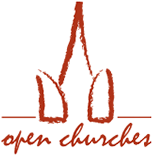Church | XI-XIIe | Romanesque | Catholic Church



Map
Opening hours
01 October - 30 April
Mon
Tue
Wed
Thu
Fri 10.00 - 16.00
Sat
Sun
01 May - 30 September
Mon
Tue
Wed
Thu
Fri 10.00 - 18.00
Sat
Sun 10.00 - 18.00
By appointment outside opening hours (+33 6 12 41 84 59)
Guided tour
Mrs Claudine Mouton (President) +33 6 12 41 84 59
Religious offices
Description
Built of red stone from the rocks of Vailly, the original church comprises a narthex topped by a bell tower, a nave, the oldest part of the building, and a choir. It was surrounded by a cemetery until the mid-19th century.
During this period, to meet the needs of a growing population, the church was enlarged. A first chapel was built, dedicated to the Virgin Mary, followed 4 years later by a second, dedicated to Saint Joseph.
During the French Revolution, the church was closed to worship and became a fodder granary.
The distinctive feature of the church can be seen from the town square: the pediment of the porch. It is surmounted by the French Republican motto: ‘Liberté, Égalité, Fraternité’. Only a handful of churches in France have this unique feature. It is the legacy of the mayor who, in 1880, decided to paint this motto without authorisation. A controversy ensued with the parish priest of Noyer, who took the matter up with the Archbishop of Bourges. In the end, the Ministère des Cultes (Ministry of Religious Affairs) authorised the inscription.
Translated with www.DeepL.com/Translator (free version)
Photos
Remarkable elements
The pulpit
Made by Guillaume Raimbault, a cabinet-maker from Aubigny-sur-Nère, this neo-Gothic masterpiece dating from 1865 was originally intended for Bourges cathedral. It is made of oak and features the twelve apostles and Christ.
Today, 3 statues are missing.
Translated with www.DeepL.com/Translator (free version)
Ceramics commemorating the First World War
This commemorative plaque, designed by Abbé Henri Planson, pays tribute to the sacrifice of the poilus. The colours are rich in symbolism: blue for the sky and red for the blood spilt. The smoke emanating from the incense burner carries the souls of the soldiers whose names appear on the plaque to heaven, represented by the Pieta.
Two Latin inscriptions complete the picture, meaning ‘they died for their country’ and ‘may they live in the Peace of the Lord’.
Translated with www.DeepL.com/Translator (free version)
The Romanesque doorway
The round-arched door is topped by several bands, one with a torus (a solid moulding in rounded relief), another with besants (small sculpted projecting discs) and ending with stars.
Translated with www.DeepL.com/Translator (free version)
The tabernacle
Listed as a Historic Monument, this 17th-century carved wooden tabernacle probably comes from Loroy Abbey. Its Baroque decoration sublimates the figure of the Good Shepherd, an allegory of Christ. Its special feature is its opening. Here, it is not a question of opening two successive doors but of pivoting the whole.
Translated with www.DeepL.com/Translator (free version)
The stained glass windows
The stained glass windows, by master stained glass artist E. Thévenot, are soberly elegant. The window in the Saint-Joseph chapel depicts the monk Saint Clair in one lancet and Abbé Bruneau, who commissioned the chapel, in the other, facing him at prayer.
Translated with www.DeepL.com/Translator (free version)
The painting of Saint Solange
This oil on canvas was also painted by Abbé Henri Planson, a native of Vailly-sur-Sauldre. It was exhibited at the Salon des Indépendants in Paris in 1910. The painting depicts the death of Saint Solange, patron saint of Berry. According to legend, a son of the Count of Poitiers, spurned by this pretty shepherdess who preferred to devote herself to the Lord, beheaded her in a fit of anger.
Translated with www.DeepL.com/Translator (free version)





















